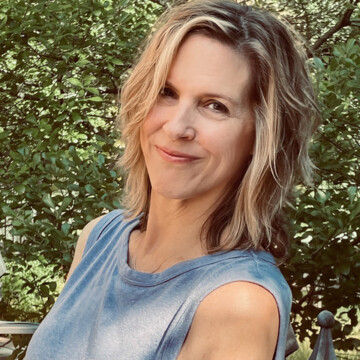For decades, whenever we have a story involving energy or the industry’s key players, we know exactly who to call to write it: Jennifer Warren. She is known well beyond our region for her expert reports on energy and its transitioning state, capital markets, and resource sustainability. She was a leading voice in covering the U.S. oil and gas shale movement, chronicling its rise, influence, pioneers, and analyzing its global impact. And now, she’s at it again, reporting on the energy revolution.

Among those she has profiled for D CEO are industry giants Scott Sheffield, Trevor Rees-Jones, and Kelcy Warren (no relation). In our November issue—which will be released later this month—Jennifer has an exceptional piece on HEYCO’s George Yates and the critical role he is playing in helping to solve Europe’s energy crisis.
Yates will be presented with the prestigious Legacy Award in our 2022 Energy Awards program on Oct. 20. In advance of the event, we sat down with Jennifer to get her thoughts on the industry—and what lies ahead.
D CEO: What are some of the key drivers of the energy challenges we are currently experiencing?
JENNIFER WARREN: “Several interrelated factors are part of my answer concerning resources, energy market dynamics, and sustainability. One: the earth’s physical resources are finite, a closed system generally, save for regenerative resources. Two: We need to supply greater amounts of energy in the future, approximately 50 percent more to 2050. Three: Roughly 82 percent of primary energy demand is sourced from fossil fuels. And finally, a decarbonization drive is colliding with how the physics and physical energy world work in the present. This breaks down as such:
“Supply tightness: The tightness story of oil supply is of predominant concern to me, as is the arbitraged oil barrels owing to sanctions on Russia, and Iran factors in as well. OPEC (and the producing world) lacks spare capacity; an underinvestment hangover of the last number of years weighs into the equation. The newly announced 2 million barrels per day (b/d) cut, levied until December 2023, supposedly translates into a 800,000 b/d real effect, largely from Saudi Arabia and the UAE’s supply.
“Two things are happening. One, the increased price effect, evident in two trading days that followed the announcement, offers OPEC+ a more stable increased revenue stream in the short term, in advance of any recessionary effects. It’s an anti-volatility measure in a very volatile world. It protects spare capacity by throttling back supply.
“Russia gets a bonus price hike. According to an oil trader, there are many millions of barrels of oil per day discounted, arbitraged, in the global market, seeing their way through the front and backdoors of Europe, the Middle East and/or Asian ports. That was artificially keeping prices below $90, to the true ‘market’s’ disadvantage. The details of supply tightness are predominant in the market—not to be betted against.
“This is not entirely a demand-driven cut, as suggested, owing to recessionary concerns. Savvy investors suggest to me that oil demand is sticky; there’s a ‘secular’ floor of demand. As a learned, practiced oilman said to me recently, ‘You shouldn’t bet against the market.’
“The current administration has had a vacillating Saudi Arabia policy, influenced by politics. The OPEC Secretary General said, of the announcement: ‘…energy security has a price.’ The OPEC+ regime has shared interests. This upcoming winter in Europe may reveal more dominoes dropping, affecting energy and food security.
“Natural gas world: In the winter of 2021, prior to the invasion of Ukraine by Russia, fissures were being exposed in Europe, as it transitioned away from natural gas plus other energy sources without having adequate, secure back-up sources for renewables. One tragedy for Europe stems from its over-reliance on Russian gas, which is now in shortfall and causing serious hardship to people and companies. That’s changing as energy maps redraw.
The German economy, an engine of Europe, is expected to contract 3.5 percent next year, according to a Deutsche Bank forecast. More coal is now being mined, shipped, and burned to redress the energy shortfalls, with more pollution wafting through locales and across the globe. Energy policy scenarios did not factor in elements of real-world physics, economics, and geopolitics—with contingency plans. That’s 20/20 hindsight and an over-simplified cautionary tale to the world. Policy assumptions need an honest rethink presently, throwing the proverbial playbook out the window.
“Ironically, the U.S. has one of the most—if not the most—market-based energy systems across the globe. Our energy mix moves accordingly. The politicization of energy is potentially criminal and undermines society welfare. If we, here in the U.S.—with a robust energy mix, great entrepreneurs, and the best market-based economy—get this wrong, it is our lost opportunity of the 21st century. The world is counting on us to get it right.
“The U.S. shale oil and gas story is— bar none—a boon of geology and human ingenuity, now it looks like prescient necessity. U.S. government R&D, tax policy, and incentives helped moved the development forward, alongside the private sector. This took decades.
“Europe will benefit from U.S. knowledge and capital going forward. Countries are now having to choose between some combination of picking consumers and citizen welfare over firms and industry to cushion the impending energy blows. Supply chains surrounding energy and food security and resources are shifting.”
D CEO: What do you see as the greatest capital market challenges in the energy transition?
WARREN: “I fear that the more recent rush toward ESG-related, sustainability-themed, and like-minded funds and instruments are distorting the allocation of capital. We saw the markets tilt toward green-type funds during the pandemic (and at other times) and now swing back toward value and incumbent-economy investments. This is simply value destruction that solves nothing. If we are to side with ESG as the good but imperfect vehicle, a more transparent, authentic version of it should be formulated. I lean toward a sustainable earth myself, but the pragmatist in me wants straight-talk and real cogent value propositions.
“According to a recent interview, since publicly traded, global nationals, and other oil and gas companies were burned in the last five years, they will produce resources more conservatively, return cash to shareholders, and run the business according to shareholder mandates. In this scenario, a status quo is expected for oil and gas for up to a decade.
“Will capital markets sober up? And what are our alternatives? A blended approach that honors both natural and human capital seems appropriate, where hard, tangible, and soft, intangible assets complement each other. There are sophisticated asset managers that understand these two worlds, but they do not communicate well. We are witnessing a waste of human and natural capital, people and lands, and systems that are to complement life and livelihoods.
“Believe it or not, the interrelationships of global energy resources—that is trade, people, and ideas—have worked well after world crises and war and reveal the better alternative of cooperation. Think of the many institutions post-World War II, the United Nations, the European common market, the World Trade Organization (formerly GATT of 1948), etc. We are there again … painfully, tragically.”
D CEO: Where would you place your bets in energy and sustainability efforts?
WARREN: “I would look closely at firms that offer net benefit to society, the problem-solvers. I’d favor oil and gas companies that have strong leadership and sound license-to-operate approaches, with the scale, scope, or mandate to advance society. Sustainable infrastructure firms and funds are worth consideration, too. I also would not underestimate innovative firms’ influences, the FAANGs-plus of all sizes, in nudging the energy mix as well.
“Even ocean wave technology has a role; it has more energy density than wind or solar. Increasingly, traditional economy and new economy organizations’ lines are blurring and how they operate. Real vision holds up to the test of time but there is a continual cycle of creation, maintenance, and destruction. That’s just fundamental across longer timescales: adapt or perish, and then assist with re-creation, rebuilding.
“If decarbonization is the current path to spare the planet, a carbon tax and/or cap-and-trade are better options than best-guess subsidies. At least with a carbon tax, the income can be used to cushion the blow to affected industries like coal, asset manager Jay Hatfield notes in a recent interview (as have others in the last many years). Also, the market ‘gets cleared’ for real energy stalwarts. Higher oil and natural gas prices also solve the problem through conservation. We are likely heading this way for several reasons as outlined above. And yes, renewables play a role, another story as well.
“Relative to decarbonization efforts, better efforts to transparently reflect carbon market instruments—such as carbon investment vehicles, voluntary and involuntary markets, and trading regimes—are needed to sort out where value is highest. It feels like the frontiers of the Wild West, which is exhilarating but fraught with peril.
“In Texas, we have an abundant supply of hard-working, determined visionaries. Our blood, sweat and tears of the shale revolution’s many faces are and will pay dividends globally. An energy, a law of attraction, the physics and resources of the region, harness the dreams of people and their talents— born-and-bred, from across the country, and the globe. I’m grateful for the firsthand opportunity to tell and live the stories of Texas entrepreneurs. I’d wager some bets there.






